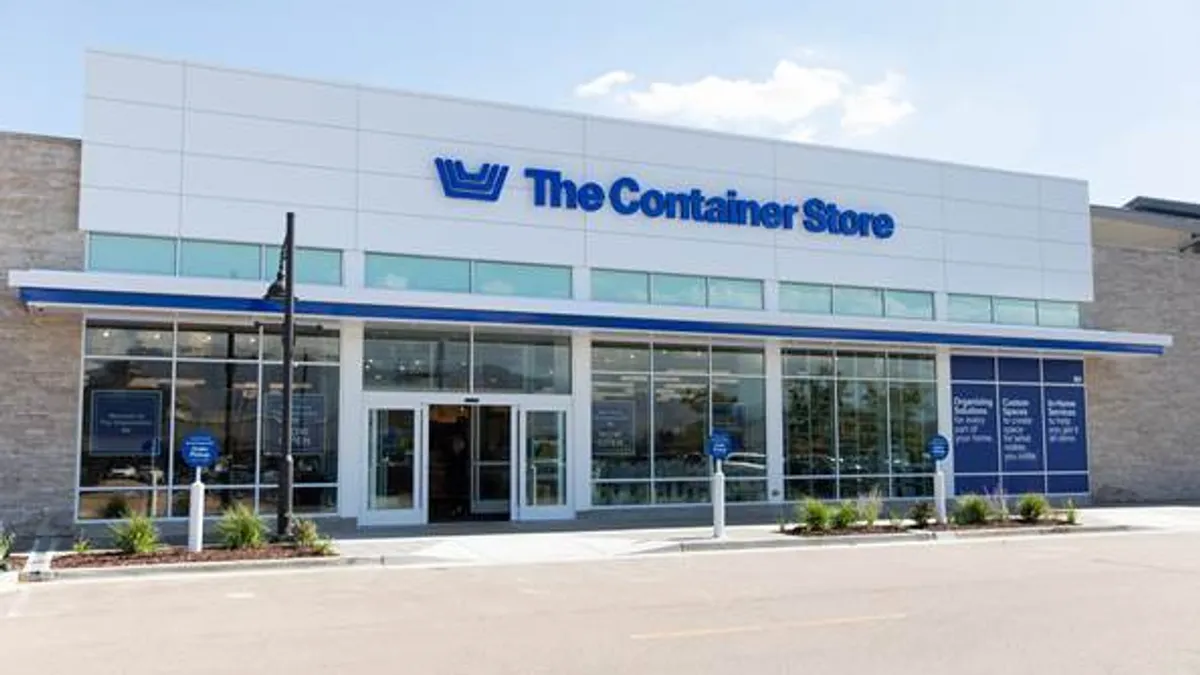Expanding its wholesale channels, Grove Collaborative’s flagship home care brand will be available on Amazon and in select Walmart stores.
The company — a Certified B. Corp. focused on selling more sustainable consumer products — will be rolling out select household items on Amazon, including hand and dish soaps, this month and will add more to the selection during the first half of the year, according to a press release. Grove Collaborative already sells products on Amazon from its Peach not Plastic and Superbloom brands, which it says have reached $1 million in sales.
An assortment of Grove Collaborative’s foaming and gel hand soaps have begun rolling out to more than 1,000 Walmart stores and online. Select Peach not Plastic and Superbloom products will also be available on the mass retailer’s website.
“Our vision has always been to change the industry to be more sustainable, and with retail being where consumers make 90% of the category purchases, expanding our retail presence is critical as we aim to grow our impact,” Stuart Landesberg, co-founder and CEO of Grove Collaborative, said in a statement. “We’re excited to bring SKUs that have previously only been available DTC to Walmart and Amazon.”
"Brands that don’t have a strong DTC presence will always be disadvantaged in digital, and brands that can’t show up in retail will miss a critical touch point when so many customers are still making in-store transactions.”

Stuart Landesberg
Co-founder and CEO, Grove Collaborative
While Grove does operate a direct-to-consumer e-commerce site, Landesberg told Retail Dive that the company goes where its customers are.
“We continue to believe that direct to consumer and digitally enabled commerce is going to play an important role in how consumers discover new products and find the products they love on a regular basis,” Landesberg told Retail Dive via email. “I think what we’re seeing in the category is that there is real value to omnichannel. Brands that don’t have a strong DTC presence will always be disadvantaged in digital, and brands that can’t show up in retail will miss a critical touch point when so many customers are still making in-store transactions.”
The move into Walmart and Amazon comes after Grove closed on a $72 million term loan in December, which it will use to refinance existing debt in a push toward profitability. The company had received a delisting notice from the New York Stock Exchange a few weeks earlier, notifying it that its stock was not in compliance with having an average closing share price of at least $1.00 over a 30-day trading period. It has six months to regain compliance, and at the time of publication, Grove’s stock is trading at 42 cents.
Grove’s third-quarter earnings report in November showed a net revenue decline of 18% year over year, and its net loss swung to a profit of $7.7 million. Anticipating revenue between $313 million and $320 million, the company raised its full-year outlook.
With profitability being key for the company right now, Landesberg wants to make sure that it’s achieved sustainably, adding that “profitability is absolutely top of mind” and it affords the company the ability to “control our own destiny and have the privilege of continuing to introduce consumers to sustainable products that can, little by little, change the world.”
The company’s latest expansion adds to its products available at other retailers such as select CVS, Harris Teeter, H-E-B, Meijer, Giant Eagle and Target. Although the company has been expanding its wholesale presence, Landesberg noted it has seen success with its DTC channel in the midst of economic pressures.
“[F]rom a business perspective we are being prudent,” Landesberg said. “With that said, we’ve seen a pretty healthy consumer, especially on DTC. We certainly have plans in place to execute if we start to see that our consumer shows signs of extreme financial pressure, but that hasn’t materialized quite yet. One reason could be that the growing importance of sustainability to consumers is a counterbalancing force.”
Sustainability is a tough thing for retailers to accomplish, but Landesberg is confident that shoppers will continue to seek out more solutions through the products they buy.
“I can’t be certain about how the macro trends will play out in 2023,” Landesberg said. “But I can be sure that consumers will continue to be moved to take action in their own lives to address the environmental crises of today and tomorrow; and we are well positioned for that.”






















